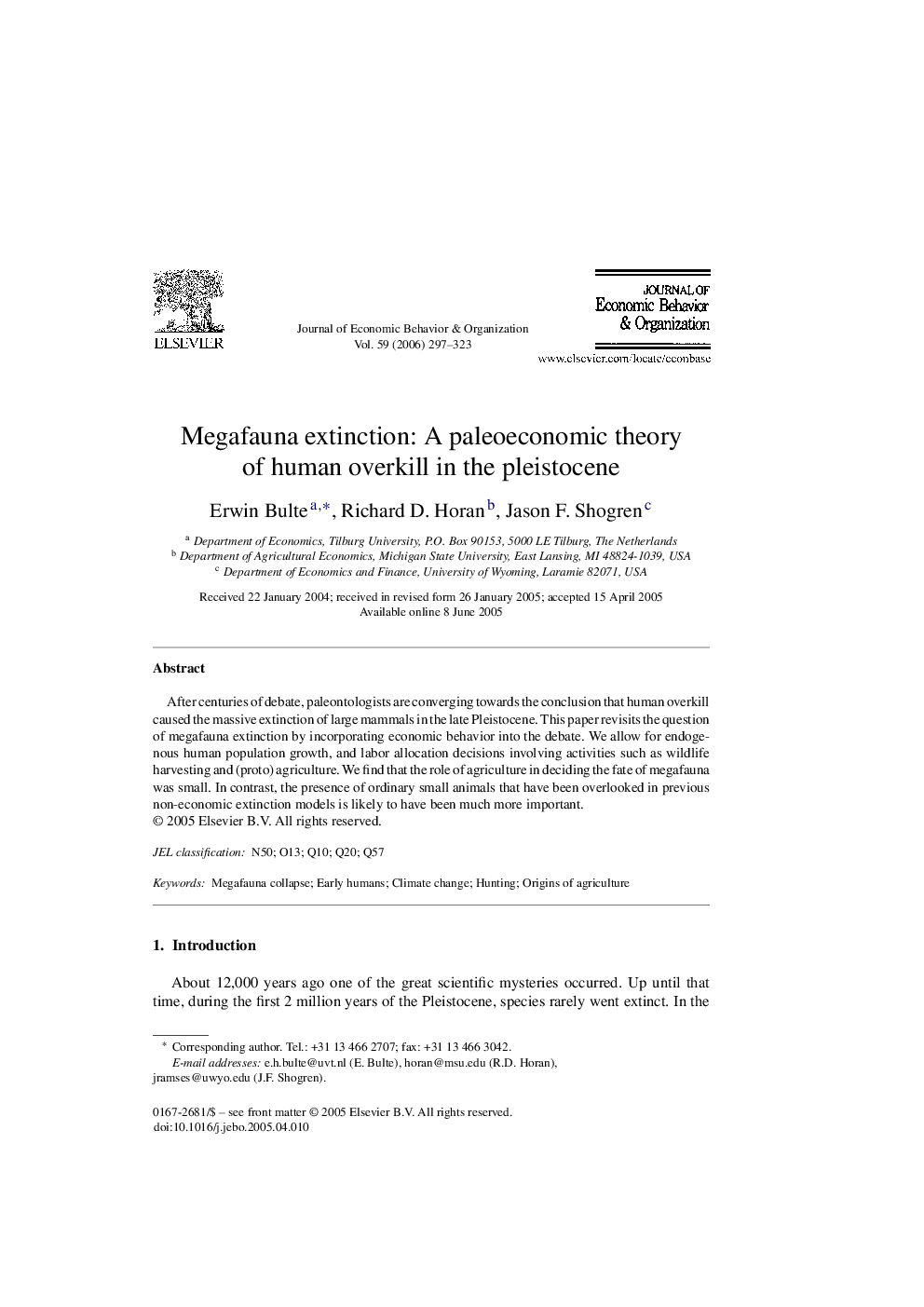| Article ID | Journal | Published Year | Pages | File Type |
|---|---|---|---|---|
| 884860 | Journal of Economic Behavior & Organization | 2006 | 27 Pages |
Abstract
After centuries of debate, paleontologists are converging towards the conclusion that human overkill caused the massive extinction of large mammals in the late Pleistocene. This paper revisits the question of megafauna extinction by incorporating economic behavior into the debate. We allow for endogenous human population growth, and labor allocation decisions involving activities such as wildlife harvesting and (proto) agriculture. We find that the role of agriculture in deciding the fate of megafauna was small. In contrast, the presence of ordinary small animals that have been overlooked in previous non-economic extinction models is likely to have been much more important.
Related Topics
Social Sciences and Humanities
Economics, Econometrics and Finance
Economics and Econometrics
Authors
Erwin Bulte, Richard D. Horan, Jason F. Shogren,
